NEWSROOM
Here we share with you various MCNEX stories.
- TitleIncreasing Demand for Sensors Due to Autonomous Driving Level Advancements. DATE 2023-07-24
-
Increasing Demand for Sensors Due to Autonomous Driving Level Advancements.
As the level of autonomous driving progresses towards full autonomy, the number of required sensors increases, necessitating higher technological capabilities.
What are the main sensor technologies for self-driving cars?
Camera
As the fundamental system for autonomous driving, cameras are capable of precise object capture, enabling accurate analysis of data for tasks such as traffic signal and sign recognition, blind-spot detection, and lane departure warnings. Stereo cameras use the visual difference between lenses to perceive objects in three dimensions, providing distance information.
Radar
Radar is a sensor suitable for detecting distant objects. It emits electronic waves into the air and measures the distance, movement direction, and height of objects based on the reflections. As radar uses radio waves, it remains unaffected by ambient brightness or weather conditions, allowing for reliable object motion detection and distance measurement even in extreme weather situations. There are ongoing efforts to develop lightweight, compact, and cost-effective radar systems.
LiDAR (Light Detection And Ranging)
The basic principle is similar to radar, but instead of radio waves, LiDAR employs high-power pulse lasers for emission and reception. Initially used for lunar terrain measurement during early lunar explorations, LiDAR was first applied to automobiles around 2005. This sensor field still presents numerous opportunities for entry into emerging markets.
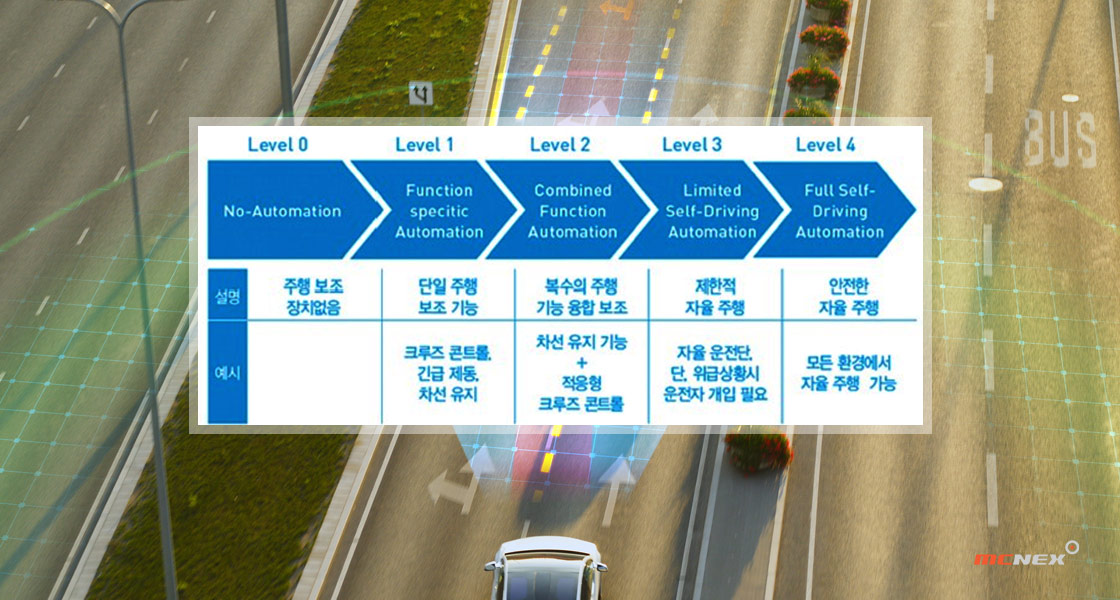
data source :NHTSA, SPRI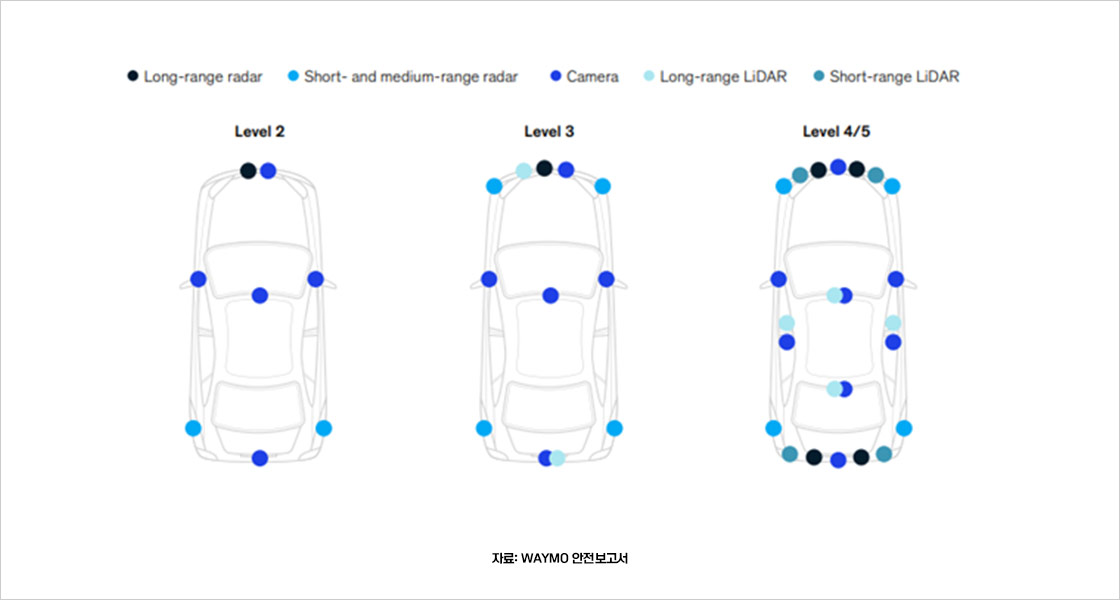
ADAS Sensor Market Expected to Grow to 34 Trillion KRW by 2030
The technological advancement of automotive sensors is essential for achieving the full potential of autonomous driving vehicles. Key sensors in Advanced Driver Assistance Systems (ADAS), such as cameras, radar, LiDAR, and ultrasonic sensors, are expected to continue driving the development of autonomous vehicles, leading to sustained growth in the ADAS sensor market until 2030.
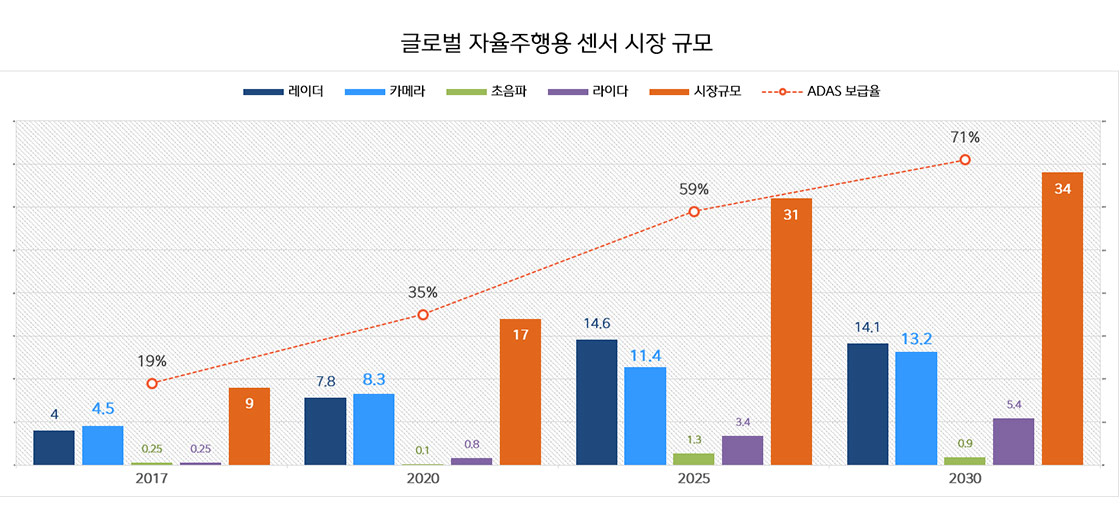
Unit: Trillion KRW (Korean Won), Percentage (%) Data Source: Yano Research, Infineon, IITP (Institute for Information & Communications Technology Promotion), EPNC (Electronics and Telecommunications Research Institute) Analysis.
In autonomous driving, cameras play a diverse role, processing image data to perceive essential information required for driving. Their functions include object detection and tracking, lane detection, signal and sign recognition, and identifying driving areas.
According to Yole Development's data, the CMOS image sensor market was valued at $17.7 billion in 2020. It is projected to show a compound annual growth rate (CAGR) of 6.7% from 2020 to 2026, reaching $25.8 billion by 2026. On the other hand, the actuator camera module assembly market is expected to experience a higher CAGR of over 14% due to technological advancements and increased value addition.
In terms of the CIS (CMOS Image Sensor) camera module market breakdown in 2026, CIS accounts for 43%, camera module assembly for 32%, lens sets for approximately 4%, and actuators for 11% of the market, as per the predictions.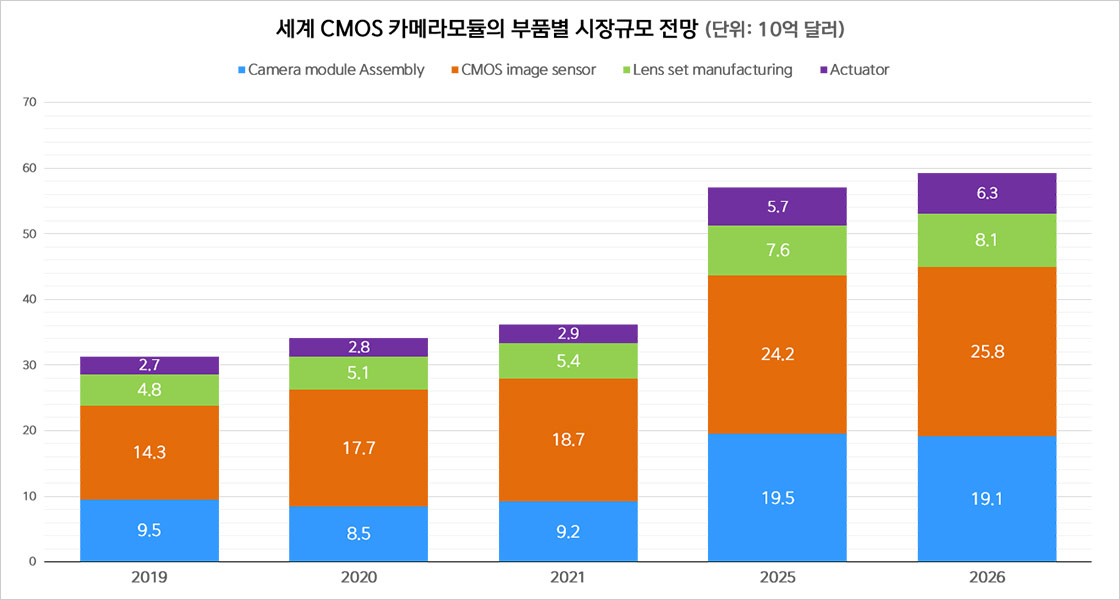 Data:Yole Développement
Data:Yole Développement- To achieve safe autonomous driving, it is essential to have a clear perception of the vehicle's surroundings, which leads to a higher demand for more camera modules to better understand the surroundings.
- Until 2020, Tesla's autonomous vehicles typically had only 2 to 3 camera modules, but since then, the number of camera modules has rapidly increased to 7 to 8 per vehicle.
- The 360° Surround View Monitor (SVM) is used with four cameras to provide convenient parking support, while internal cameras are applied in drowsy driving prevention systems to monitor the driver's gaze. As a result, the usage of cameras in the automotive industry continues to expand.
- In the future, the utilization of automotive cameras is expected to further increase, not only in Advanced Driver Assistance Systems (ADAS) but also in features like Virtual Mirrors, 360° Surround View Monitors, and rearview cameras.
- With the proliferation of autonomous vehicles, the adoption rate of camera modules is rapidly increasing.
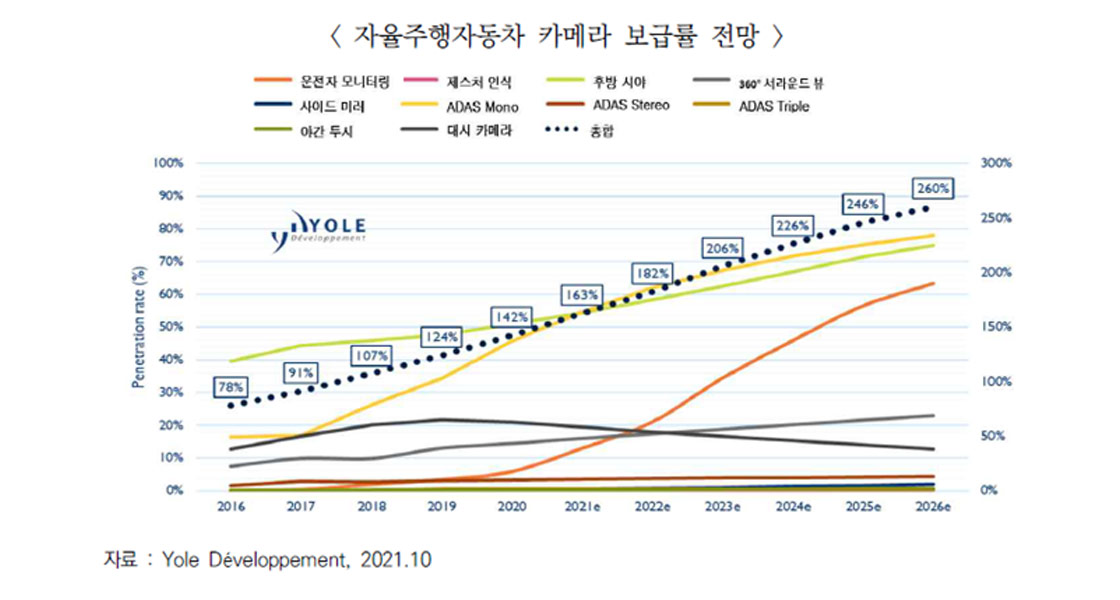
MCNEX is actively involved in the development of high-resolution camera modules used in devices such as smartphones and tablets, along with continuous research and development in camera-based sensor technology. As the demand for such technology increases in the autonomous driving industry, MCNEX is expanding its research and development efforts in sensor technology.
The company is currently focused on developing camera sensors and systems for Advanced Driver Assistance Systems (ADAS) and autonomous driving technologies. With an investment of over 20 billion KRW annually in R&D for autonomous vehicle sensing cameras and electric vehicle components, MCNEX aims to achieve a resolution of 6 million pixels by the end of the year, up from the current 2 million pixels.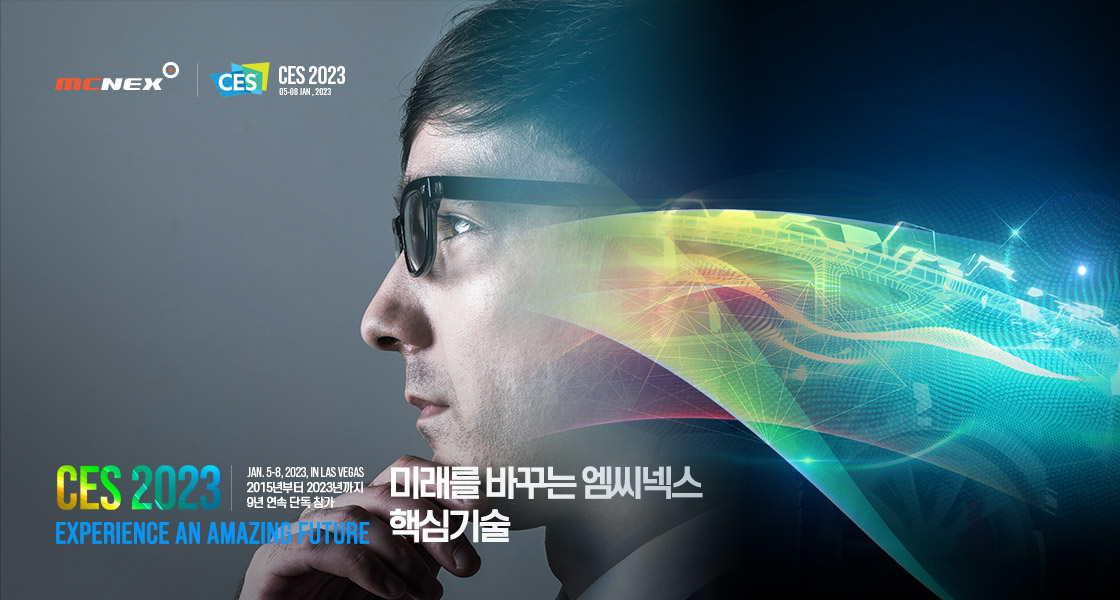
MCNEX has been participating in the world's largest electronics and IT exhibition, CES, held annually in Las Vegas since 2015, and has continued to have a dedicated booth for nine consecutive years until CES 2023.
As a core technology in the autonomous driving field, MCNEX applied its expertise in Advanced Driver Assistance Systems (ADAS) to optimize sensing cameras and image systems for Level 3 autonomous vehicles, which are set to be commercialized from next year. They unveiled a Tri-Focal camera sensing system specialized in recognizing objects in the front and sides, using three cameras to enhance the stability of autonomous driving. Additionally, they showcased a dual sensing camera system using a prism method to increase the recognition rate of objects in the side direction of rotating vehicles. These cutting-edge innovations demonstrated MCNEX's technological competitiveness and its role in leading the future of the autonomous driving era.